Vultures play a crucial role in our ecosystem. As scavengers, they eat dead animals, removing them from roadsides and other areas. Vultures not only cut down on the number of rotten, smelly carcasses but also reduce the spread of diseases.

Vultures Slow the Spread of Diseases
Vultures play a crucial role in our ecosystem. As scavengers, they eat dead animals, removing them from roadsides and other areas. Vultures not only cut down on the number of rotten, smelly carcasses but also reduce the spread of diseases.
Rapid Carcass Removal
Because vultures search for food from the air, they can travel faster and find carcasses more quickly than scavengers that walk. Vultures also tend to feed in groups. So when one vulture finds a carcass, others soon join it, and together they dispose of the dead animal very quickly. This rapid removal of carcasses keeps bacteria, parasites, and other disease-causing organisms from growing and entering the ecosystem.
When Vultures Get There First
When vultures eat a dead animal that had rabies, distemper, or other disease, they don’t get sick and they keep mammalian scavengers from eating the animal and getting the disease. But if an opossum, raccoon, or your dog were to eat that carcass, they could get sick and spread the disease to more animals.
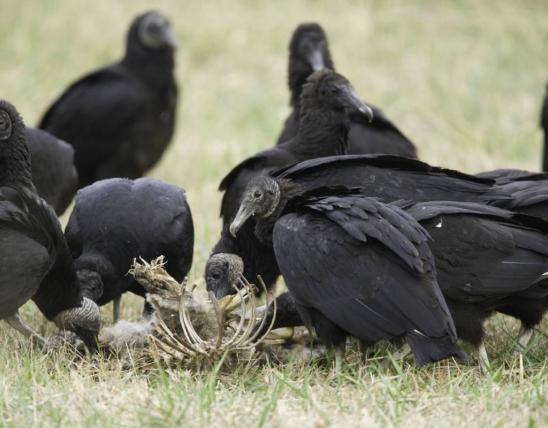
Made for Scavenging
Vultures are highly adapted for their scavenging lifestyle. While many animals scavenge, vultures are the only land vertebrates (animals with a backbone) that rely almost entirely on dead animals for food.
When Vultures Get There First
When vultures eat a dead animal that had rabies, distemper, or other disease, they don’t get sick and they keep mammalian scavengers from eating the animal and getting the disease. But if an opossum, raccoon, or your dog were to eat that carcass, they could get sick and spread the disease to more animals.
Vulture ID Tips
In addition to knowing the vultures’ flight patterns (above), these field marks will help you tell which vulture is which.

Adult turkey vultures have red heads, white beaks, and coffee-brown plumage. The nostrils of turkey vultures are very large and, sometimes when viewed from the side, you can see through them.
Noppadol Paothong
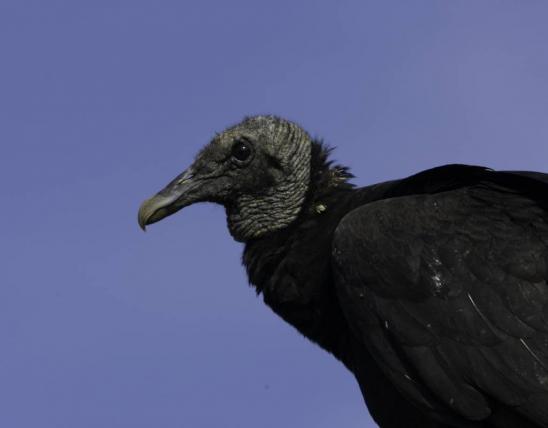
Adult black vultures have grayish heads and black plumage. They have slimmer bills than turkey vultures.
Noppadol Paothong
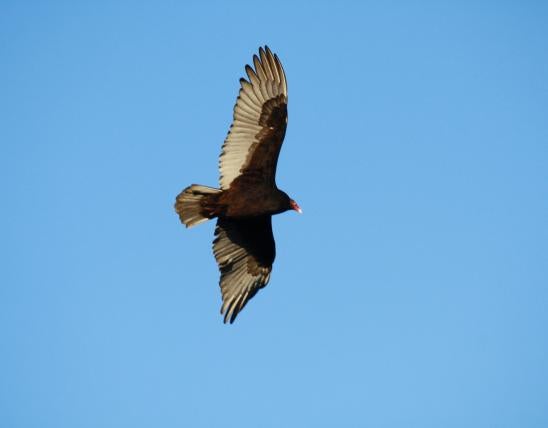
When turkey vultures are viewed from below, the lower half of their wings appear silver or grayish white in color.
Dianne Van Dien
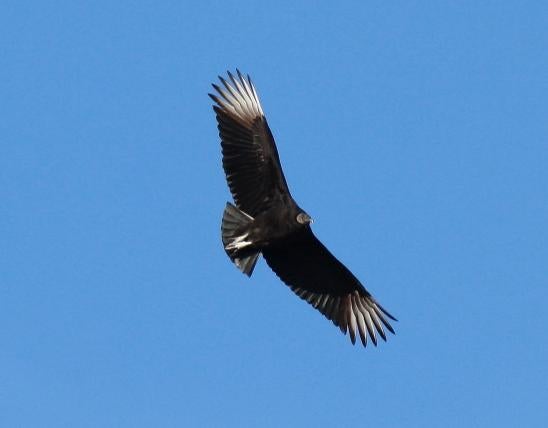
The wings of black vultures have white patches at the ends. They appear stockier and have shorter tails than turkey vultures.
Dianne Van Dien
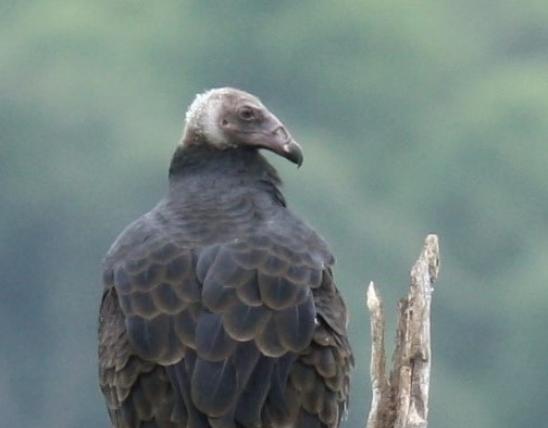
Young turkey vultures have gray heads and black beaks. When identifying vultures, be sure to look at other field marks besides head color to tell if a vulture is a black vulture or juvenile turkey vulture.
Don Shelden

To tell the difference between juvenile and adult black vultures, look closely. The heads of juvenile black vultures are slightly darker and appear less bumpy than the heads of adult black vultures.
Jim Rathert





